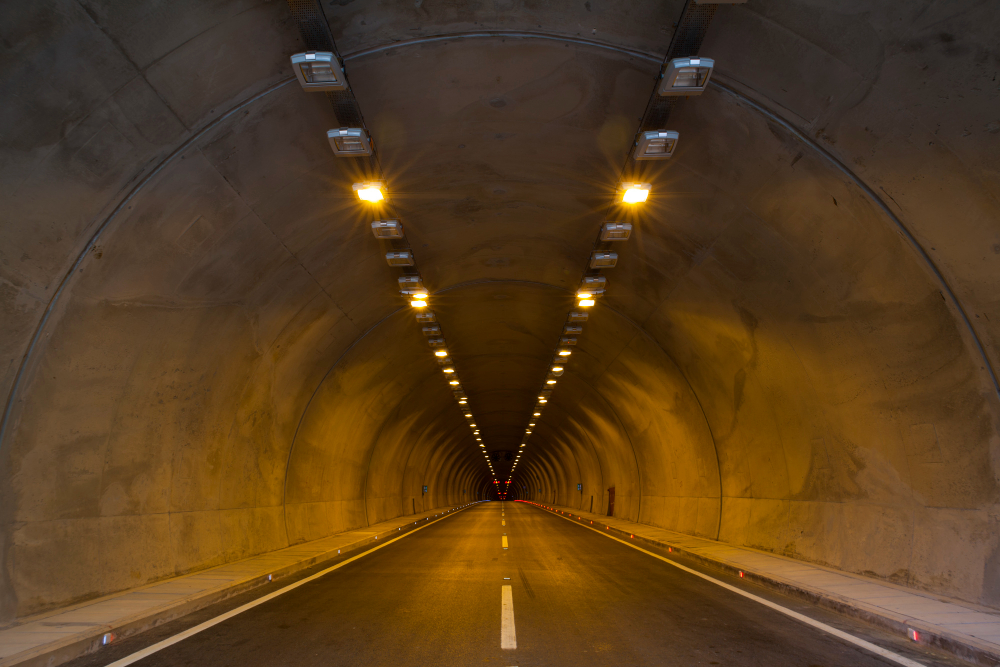In today’s rapidly urbanising world, infrastructure must not only grow outward but also inward and downward. As cities become denser and terrains more challenging, the demand for smart and efficient underground solutions is increasing. This is where tunnel engineering plays a critical role — enabling smooth transportation, optimized utilities, and resilient infrastructure beneath the surface.

What is Tunnel Engineering?
It is a specialized branch of civil engineering focused on the design, construction, and maintenance of tunnels. It involves complex analysis of geological conditions, structural design, ventilation systems, safety protocols, and advanced construction methodologies like TBM (Tunnel Boring Machines) and NATM (New Austrian Tunneling Method).
Whether for roadways, railways, metros, water conveyance, or power infrastructure — tunnels are critical components of modern development. From mountain crossings to undersea passages, the field of tunnel engineering is central to building seamless and efficient networks in space-constrained environments.
The Importance of Tunnel Infrastructure
Tunnel infrastructure enhances urban mobility, reduces congestion, and preserves surface space. In congested cities like Mumbai, Delhi, or Bengaluru, underground roads and metro tunnels offer relief from surface-level traffic chaos while optimizing land use.
Key Benefits of Tunnel Infrastructure:
- Saves surface space in dense cities
- Enables faster transport across complex terrain
- Reduces environmental and noise pollution
- Supports utilities like pipelines, cables, and sewage systems
- Ensures safer, weather-proof connectivity
Projects like the Mumbai Coastal Road Tunnel, Atal Tunnel (Rohtang), and Chennai Metro Rail are prime examples of how India is investing in long-term, sustainable tunnel infrastructure.
Techniques in Modern Tunnel Engineering
Today’s tunnel engineering relies on a blend of innovation, safety, and adaptability. Engineers evaluate multiple factors including rock types, soil mechanics, groundwater levels, seismic activity, and construction logistics before execution.
Common Tunnel Construction Methods:
- Tunnel Boring Machine (TBM): Ideal for long tunnels in stable ground
- Cut and Cover: Used in shallow tunnels where open excavation is feasible
- Drill and Blast: Suitable for hard rock conditions, especially in hilly terrain
- New Austrian Tunneling Method (NATM): Flexible and adaptable to changing ground conditions
Advanced software and 3D modeling tools are also employed to simulate tunnel alignment, stress zones, and risk mitigation strategies, ensuring precision and safety throughout the process.
🇮🇳 Tunnel Infrastructure Development in India
India is witnessing a tunnel revolution, especially in transport and hydropower sectors. The government is heavily investing in tunnel infrastructure to connect remote regions, support defense logistics, and promote urban sustainability.
Major Tunnel Projects in India:
- Atal Tunnel, Himachal Pradesh – World’s longest high-altitude tunnel
- Zojila Tunnel, J&K – Strategic route connecting Srinagar to Leh
- Mumbai Metro Line 3 – A fully underground metro corridor
- Silkyara Tunnel, Uttarakhand – Vital for Char Dham connectivity
Such projects highlight India’s growing capabilities in tunnel engineering and the need for skilled EPC players to deliver them successfully.
Sustainability in Tunnel Design
Modern tunnel infrastructure is increasingly aligned with sustainability goals. Tunnels reduce urban sprawl and limit environmental disruption compared to surface routes. Additionally, tunnel systems can be equipped with:
- Energy-efficient LED lighting
- Ventilation systems with air purification
- Emergency response tech
- Recycled and low-carbon construction materials
At Tembo Infra, we’re committed to building not only structurally sound tunnels but also green, intelligent, and resilient underground solutions.
Conclusion
The future of infrastructure lies beneath the surface, and tunnel engineering is paving the way. As urban demands grow and terrains become more complex, underground development will continue to play a vital role in sustainable growth.
With the right expertise, technology, and commitment, tunnel infrastructure can unlock massive potential for cities, transport systems, and utilities alike.
At Tembo Infra, we specialize in engineering excellence and EPC execution across tunnels, highways, bridges, and smart infrastructure. Let’s build what the future needs — above and below ground.



